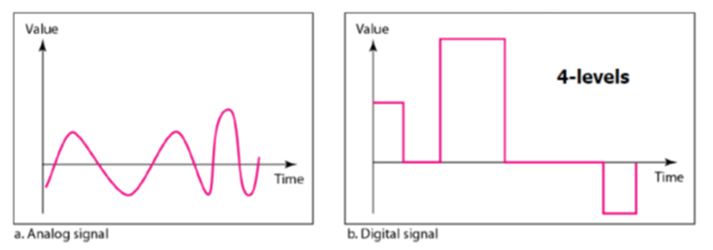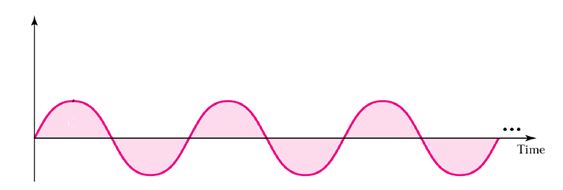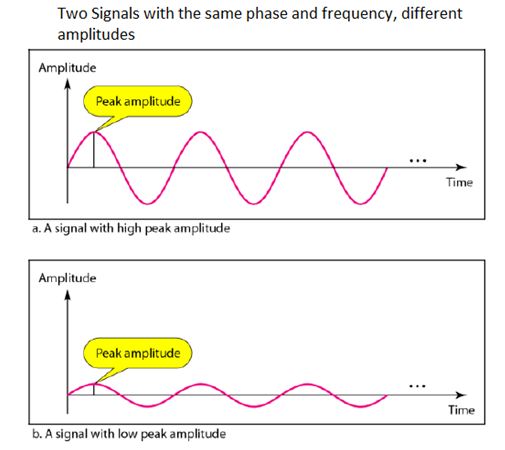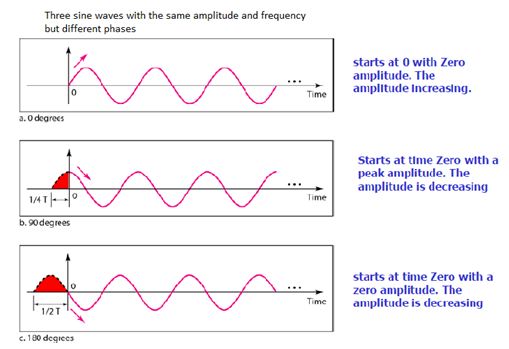Fundamentals of Data and Signals
The major function of the physical layer is to move data in the form of electromagnetic signals across a transmission medium. Whether the data may be numerical statistics from another computer, sending animated pictures from a design workstation, or causing a bell to ring at a distant control center, you are working with the transmission of data across network connections.
Analog and Digital Data
Data can be analog or digital. The term analog data refers to information that is continuous, Digital data refers to information that has discrete states. For example, an analog clock that has hour, minute, and second hands gives information in a continuous form, the movements of the hands are continuous. On the other hand, a digital clock that reports the hours and the minutes will change suddenly from 8:05 to 8:06.
Analog and Digital Signals:
An analog signal has infinitely many levels of intensity over a period of time. As the wave moves from value A to value B, it passes through and includes an infinite number of values along its path. A digital signal, on the other hand, can have only a limited number of defined values. Although each value can be any number, it is often as simple as 1 and 0.
You May Also Like
Digital Signals
Composite Signals
Different Methods for Digital Signal Transmission
The following program illustrates an analog signal and a digital signal. The curve representing the analog signal passes through an infinite number of points. The vertical lines of the digital signal, however, demonstrate the sudden jump that the signal makes from value to value.
Periodic and Non-periodic Signals:
Analog and digital signals can take one of two forms: periodic or non-periodic
Periodic Signal: A periodic signal completes a pattern within a measurable time frame, called a period, and repeats that pattern over subsequent identical periods. The completion of one full pattern is called a cycle.
Non-periodic signal: A non-periodic signal changes without exhibiting a pattern or cycle that repeats over time.
Periodic Analog Signal:
Periodic analog signals can be classified as simple or composite. A simple periodic analog signal, a sine wave, cannot be decomposed into simpler signals. A composite periodic analog signal is composed of multiple sine waves.
The sine wave is the most fundamental form of a periodic analog signal. When we visualize it as a simple oscillating curve, its change over the course of a cycle is smooth and consistent, a continuous, rolling flow. The following figure shows a sine wave. Each cycle consists of a single arc above the time axis followed by a single arc below it.
A sine wave can be represented by three parameters: the peak amplitude, the frequency, and the phase.
Peak Amplitude:
The peak amplitude of a signal is the absolute value of its highest intensity, proportional to the energy it carries. For electric signals, peak amplitude is normally measured in volts. The following Figure shows two signals and their peak amplitudes.
Period and Frequency:
Period refers to the amount of time, in seconds, a signal needs to complete 1 cycle. Frequency refers to the number of periods in I s. Note that period and frequency are just one characteristic defined in two ways. Period is the inverse of frequency, and frequency is the inverse of period, as the following formulas show.
f= 1/T and t= 1/F
Phase:
The term phase describes the position of the waveform relative to time O. If we think of the wave as something that can be shifted backward or forward along the time axis, phase describes the amount of that shift. It indicates the status of the first cycle.
Wavelength:
Wavelength is another characteristic of a signal traveling through a transmission medium. Wavelength binds the period or the frequency of a simple sine wave to the propagation speed of the medium. While the frequency of a signal is independent of the medium, the wavelength depends on both the frequency and the medium. Wavelength is a property of any type of signal. In data communications, we often use wavelength to describe the transmission of light in an optical fiber. The wavelength is the distance a simple signal can travel in one period.
Time and Frequency Domain:
Time Domain:
A sine wave is comprehensively defined by its amplitude, frequency, and phase. We have been showing a sine wave by using what is called a time-domain plot. The time-domain plot shows changes in signal amplitude with respect to time.
Frequency Domain:
To show the relationship between amplitude and frequency, we use a frequency-domain plot. A frequency-domain plot is concerned with only the peak value and the frequency.
It is obvious that the frequency domain is easy to plot and conveys the information that one can find in a time domain plot. The advantage of the frequency domain is that we can immediately see the values of the frequency and peak amplitude. A complete sine wave is represented by one spike. The position of the spike shows the frequency; its height shows the peak amplitude.
You May Also Like:
Transmission Impairment
Different Criteria for Performance of Networks
Back to DCN Questions and Answers







